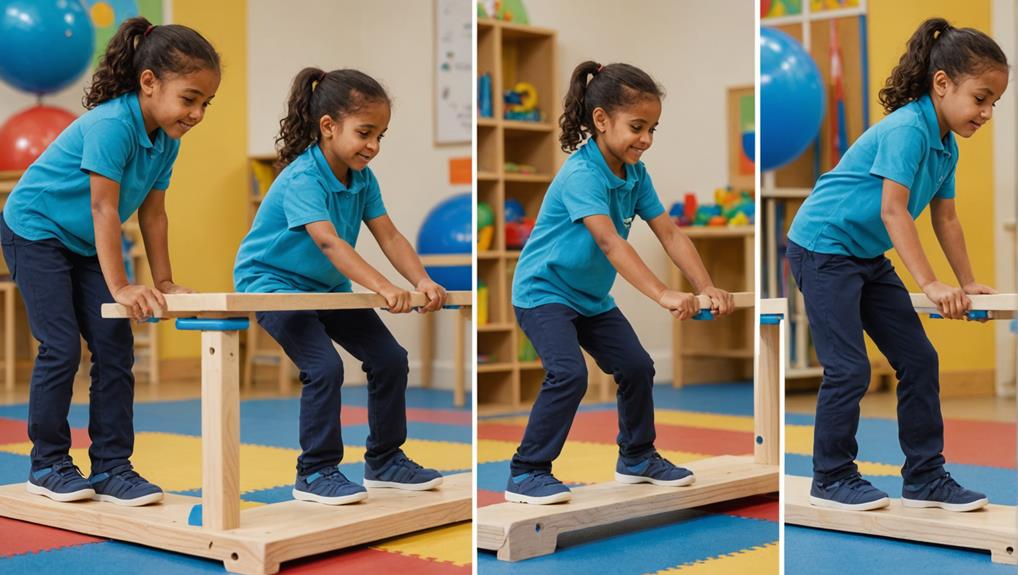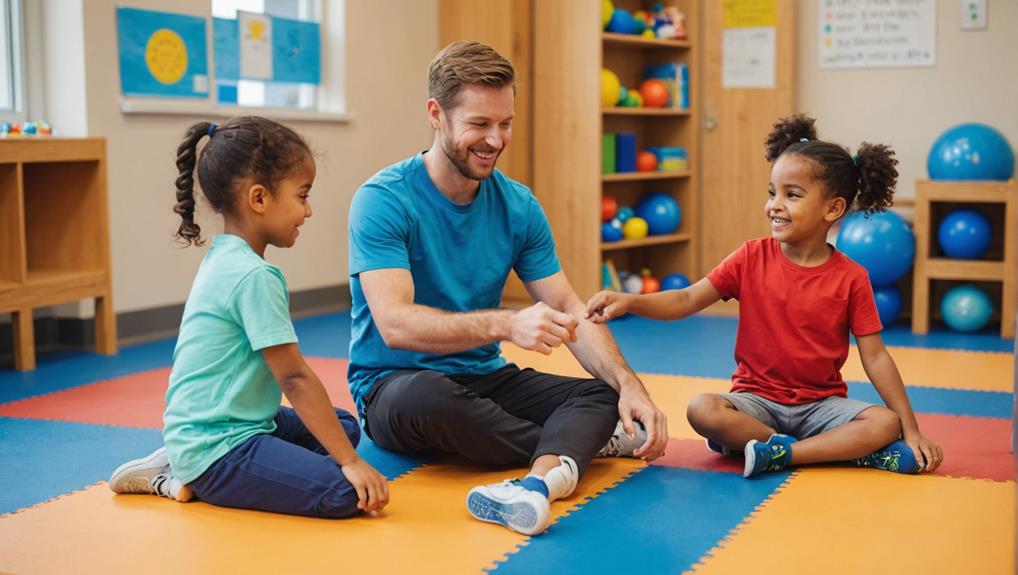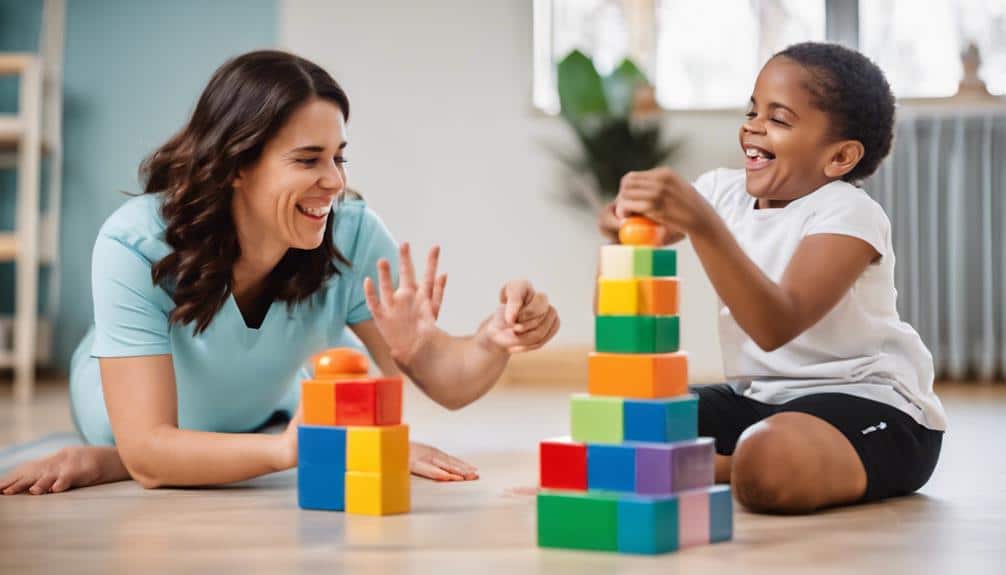Parents often ask us this important question, and we’re here to help clarify. Occupational and physical therapy for kids are both designed to support children in reaching their full potential, but they focus on different areas of development. Occupational therapy (OT) hones in on helping children master everyday skills such as writing, dressing, and feeding, while physical therapy (PT) works on improving their strength, balance, and mobility. Both treatments are tailored to meet each child’s unique needs, ensuring they gain the confidence and abilities to thrive in daily life.
At our pediatric therapy center, we take an individualized approach to care, blending occupational and physical therapy for kids when needed. For example, a child struggling to hold a pencil may benefit from OT to strengthen fine motor skills, while PT can address any underlying core strength or posture issues. By addressing these challenges holistically, we empower children to overcome obstacles and celebrate their progress in every session.
Our goal is to provide families with a clear understanding of how these therapies can help their children succeed. Whether your child needs to navigate physical challenges, improve coordination, or gain independence with daily tasks, we’re here to guide you every step of the way. If you have questions about your child’s development or are considering therapy, we’d love to connect and discuss how we can support your family.
Key Takeaways
- Occupational therapy for children focuses on enhancing life skills and encompasses physical, developmental, social, and emotional aspects.
- Physical therapy aims to improve children’s gross motor skills and mobility and manage pain through stretching and stability exercises.
- Both types of therapy work to boost a child’s independence, social interactions, emotional regulation, and academic success.
- Occupational and physical therapies aid children in performing daily activities, self-care tasks, and academic tasks while also building their confidence.
- Either therapy is needed when a doctor or therapist identifies challenges in daily living activities, fine motor skills, sensory processing issues, or gross motor skills.
Defining Pediatric Occupational Therapy
Occupational therapy, often a cornerstone in the development of children with different delays, focuses on enabling these young people with the necessary life skills. This holistic approach, designed to address physical, developmental, social, and heartfelt aspects, provides therapeutic activities to improve independence in daily tasks and enhance overall performance. Similar to Pediatric Physical Therapy, occupational therapy also plays an essential role in helping children achieve their developmental milestones and promote their motor skills.
Occupational therapy’s primary goal is to help children develop crucial skills required in a school environment. These skills range from improved writing to the development of social skills, providing the tools for children to thrive in an academic setting.
Occupational therapists possess specialized training in sensory integration techniques, thereby incorporating a distinctive, all-encompassing perspective into their approach. This expertise allows them to design and conduct meaningful and purposeful activities, encouraging children to engage more fully in their daily lives.
Understanding Pediatric Physical Therapy
Delving into physical therapy, we find an approach that primarily aims to improve gross motor skills. Pediatric physical therapy, a subset of this field, boosts mobility, prevents worsening conditions, and eases pain in children. Trained therapists analyze impairments from a biomechanical perspective, employing exercises and play to strengthen mobility skills.
| Gross Motor Skills | Biomechanical Analysis | Pediatric Therapy Techniques |
|---|---|---|
| Hand-eye coordination | Bone and Joint Alignment | Exercises |
| Sports activities | Muscle Function Restoration | Play |
| Sitting upright | Pain Alleviation | Mobility Improvement |
| Standing | Preventive Measures | Condition Care |
| Walking and running | Full-body Movement Development | Pain Control |
This practice aims to restore muscle function and align bones and joints, thereby supporting the child’s overall physical well-being. The exercises and play used in therapy are not only beneficial but also enjoyable for children, making therapy sessions less of a chore and more of an engaging activity. Pediatric physical therapy, in turn, offers a promising avenue for children to gain full-body movement skills like sitting upright, standing, walking, and running, making them more independent and confident.
Occupational vs. Physical Therapy

When comparing occupational and physical therapy, one must consider each’s unique goals and overlapping therapeutic techniques. Pediatric occupational therapy is focused on developing crucial skills for daily activities and academic work in children, emphasizing fine motor skills, sensory processing, and cognitive abilities. In contrast, physical therapy highlights gross motor skills and mobility. However, both aim to improve a child’s independence and development, often using similar methods to tackle a range of developmental needs and challenges.
Distinct Therapy Goals
Understanding the unique goals of both occupational and physical therapy is necessary when seeking the proper support for a child’s development. The main difference between occupational therapy (OT) and physical therapy (PT) lies in their objectives and the specific skills they aim to develop.
Similarly to how pediatric speech therapy is tailored to the specific needs of the child, OT and PT are also personalized to address the child’s particular challenges and goals. The personalization ensures effective therapy and notable advancements in the targeted skills.
Occupational therapy focuses on improving fine motor skills and enhancing a child’s ability to engage in daily activities and school tasks. If your child needs occupational therapy, it can significantly assist with tasks like writing, drawing, and using utensils, emphasizing daily living skills.
On the other hand, pediatric physical therapy targets the development of gross motor skills. PT aims to improve children’s physical strength, mobility, and overall movement capabilities. The focus is on activities like walking, running, jumping, and playing sports.
Overlapping Therapeutic Techniques
While there are notable differences between occupational therapy and physical therapy, it’s important to note that there are also overlapping therapeutic techniques. Both fields utilize specialized equipment, such as balance boards and scooters, to enhance children’s skills. Therapists use these methods to provide an engaging and practical therapeutic experience for children.
Occupational therapy focuses on improving self-care, play, and school task activities. Therapists use methods that develop specific skills, enabling children to achieve independence in their daily living activities. By enhancing children’s fine motor coordination, occupational therapy helps them to engage more fully in their environment.
Physical therapy, on the other hand, emphasizes exercises that stretch, strengthen, and flex the children’s muscles. The goal is to enhance gross motor skills and balance, thereby improving mobility and coordination. Physical therapists use methods that build muscle strength, endurance, and mobility.
Techniques Employed in Therapies
Children’s therapy methods, particularly in occupational and physical therapy, are meticulously crafted to promote growth and development. These approaches are articulated to improve the child’s physical abilities and cognitive skills while simultaneously nurturing their mental well-being.
Occupational therapy methods encompass a variety of exercises and activities, each tailored to the child’s requirements. These may include:
- Hand-strengthening exercises enhance the child’s ability to grasp and manipulate objects.
- Delicate motor coordination tasks, refining precision in movements and actions.
- Sensory integration activities aid the child in processing and responding to sensory stimuli effectively.
On the other hand, physical therapy methods focus on boosting physical mobility and strength. These include:
- Stretching exercises increase flexibility and range of motion.
- Balance training assists in the development of stability and balance.
- Muscle-strengthening activities and coordination drills are needed to improve gross motor skills.
In both therapies, therapists utilize specific equipment like therapy balls, therapy bands, balance boards, and sensory tools to improve skills further and facilitate development. The ultimate goal is to enable each child to reach their full potential, mastering tasks that are crucial for their daily life and future growth.
Benefits of Therapies for Kids

The benefits of occupational and physical therapy for children are manifold and expansive. These therapeutic interventions not only have a profound impact on a child’s developmental trajectory but also play a critical role in enhancing their daily living skills. Moreover, through repeated engagement in therapy, children often experience a notable improvement in their self-confidence, fostering a sense of independence and self-efficacy.
Pediatric Therapy’s Impact on Development
Fostering developmental growth in children, as well as occupational and physical therapy, serve as vital tools to address specific needs and challenges. These therapies play an integral role in child development, improving both fine and gross motor skills, fostering independence, and enhancing social interactions.
Occupational therapy focuses on improving fine motor skills, such as handwriting and using utensils. These skills are essential for academic success and daily life. Physical therapy, on the other hand, improves gross motor skills like walking, running, and jumping, which are necessary for overall mobility and independence.
The impact of these therapies on a child’s development is significant. Here are a few key benefits: improved social interactions and regulation of emotions through targeted occupational therapy and increased physical strength and coordination from regular physical therapy sessions.
- Mastery of fine motor skills is vital for academic success.
- Development of gross motor skills needed for independent mobility.
These therapies not only build self-reliance but also contribute to a child’s academic success, emotional well-being, and physical strength. Hence, understanding and advocating for occupational and physical therapy for kids is essential for those who desire to serve others.
Enhancing Kids’ Daily Skills
We often underestimate the significance of fine and gross motor skills in our daily lives. Yet, these are the foundation for a child’s physical capability to perform daily tasks. Occupational therapy (OT) and physical therapy (PT) can help children gain the skills they need to be as self-sufficient as possible.
OT aids in improving fine motor skills and eye-hand coordination, which are fundamental for self-care and academic tasks. This therapy also helps enhance social skills and regulation of feelings, thereby positively impacting school performance. On the other hand, physical therapy focuses on gross motor skills, aiding kids to improve balance, coordination, and overall physical well-being.
| Benefits of OT | Benefits of Physical Therapy | Impact on Daily Skills |
|---|---|---|
| Improves fine motor skills | Enhances gross motor skills | Facilitates daily activities |
| Improves eye-hand coordination | Strengthens balance and coordination | Improves self-care tasks |
| Aids in social skills and emotional regulation | Strengthens muscles | Enhances academic tasks |
| Positively impacts school performance | Boosts mobility and independence | Fosters independence |
Through these therapies, children can reach development milestones, resulting in a better quality of life. Fundamentally, occupational and physical therapies are crucial in enhancing a child’s daily skills.
Building Confidence Through Therapy
Bolstering faith in children is a cornerstone of occupational and physical therapy. These therapeutic approaches improve a child’s abilities and self-esteem, promoting overall growth and development.
Occupational therapy heightens a child’s confidence by refining fine motor skills, which are essential for tasks such as writing and self-care. Similarly, physical therapy boosts confidence by enriching gross motor skills and nurturing a child’s ability to walk, run, and engage in sports.
Beyond motor skills, both occupational and physical therapy target the improvement of daily living activities and social skills, thereby strengthening the child’s confidence in their capacity to perform tasks and interact with their environment.
To further illustrate, consider the following:
- Occupational therapy enhances confidence in school performance and social interactions.
- Physical therapy builds assurance by enhancing mobility and balance.
- Both therapies nurture the development of motor coordination, boosting the child’s self-confidence.
- Through therapy, a child’s confidence in their abilities to perform daily living activities is significantly raised.
In essence, occupational and physical therapy play pivotal roles in building a child’s confidence and equipping them with the skills necessary to navigate life’s challenges.
Identifying Therapy Needs for Children
How can we identify if a child requires occupational or physical therapy? The initial step is recognizing the child’s needs. When children face challenges in daily living activities, struggle with fine motor skills and visual-perceptual skills, or exhibit sensory processing issues, they may benefit from occupational therapy. This form of treatment can also enhance cognitive skills and social interactions.
Conversely, does your child struggle with gross motor skills, mobility issues, or a diagnosed orthopedic condition? Physical therapy could be the answer. This therapy focuses on improving these skills and preventing the worsening of conditions.
The assessment of these needs often begins with diligent observation by parents or caregivers, followed by a professional evaluation by a doctor or therapist. These professionals use structured assessments to identify the specific needs of the child and recommend the appropriate therapy. Remember, the goal is always to help children reach their full potential. Addressing these needs early on, whether through occupational or physical therapy, can make a significant difference in a child’s life.
Frequently Asked Questions
How to Explain Occupational Therapy to Kids?
Occupational therapy aids children in enhancing skills necessary for daily activities, such as writing and playing. Engaging in tasks fosters emotional regulation, social skills improvement, fine motor skills, and general independence.
What Is the Difference Between OT and PT for Kids?
Occupational therapy (OT) for children primarily improves fine motor skills and daily life tasks, while physical therapy (PT) enhances gross motor skills and bodily movements. Both therapies aim to boost a child’s quality of life.
How Do You Explain Physical Therapy to a Child?
Physical therapy for children is an engaging process involving exercises and activities that improve strength, mobility, and coordination. This, in turn, boosts their ability to participate in daily activities and sports with increased independence and ease.
How Do Physical and Occupational Therapy Work Together?
Physical and occupational therapy synchronizes like a symphony, with each player playing a crucial role. They collaboratively boost a child’s gross and fine motor skills, fostering their independence and enhancing functionality in daily life activities.
Conclusion
Parents often ask us, “How can therapy help my child specifically?” The truth is that occupational and physical therapy can be life-changing for kids. These therapies support children in building independence, boosting self-confidence, and achieving milestones that once seemed out of reach. Whether your child needs help with motor skills, balance, or everyday tasks like dressing and eating, the right therapy plan can unlock their full potential and transform their quality of life.
Every child is unique, and so are their challenges and strengths. At our pediatric therapy center, we are always happy to discuss your child’s individual needs and create a plan tailored just for them. Occupational and Physical Therapy for kids isn’t a one-size-fits-all solution; it’s a personalized approach that helps children grow, learn, and thrive. Let’s talk about how we can partner with you to help your child reach their goals and build a brighter future together.


Recent Comments